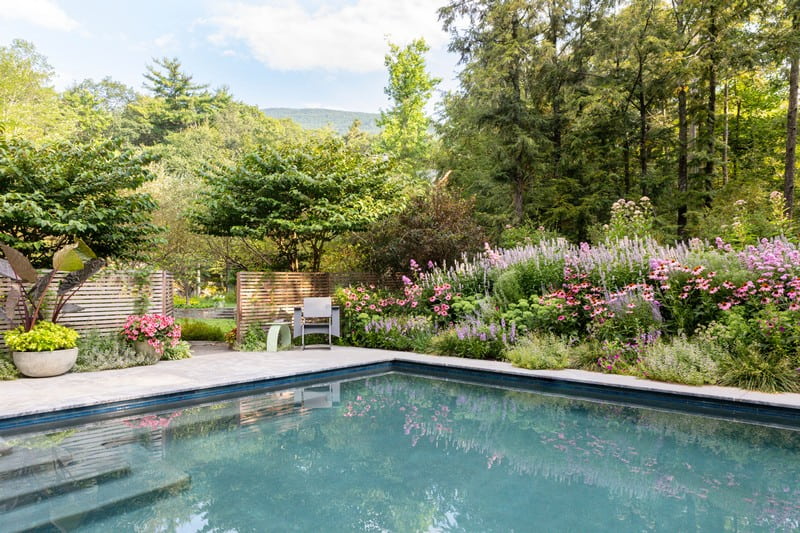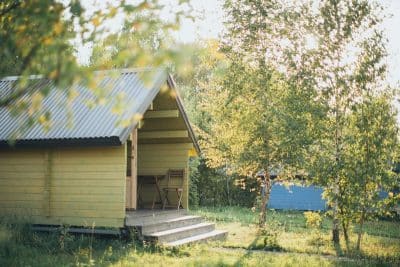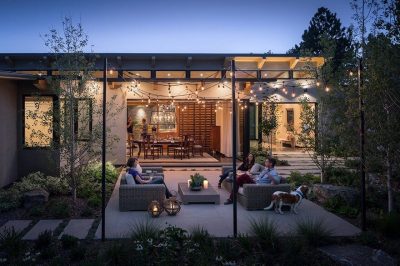
Your backyard isn’t just a patch of grass—it’s an open‑air extension of your living space where family gatherings, weekend barbecues, and quiet escapes all come to life. Yet when it’s time to invest in outdoor upgrades, many homeowners wrestle with the same dilemma: should I pour my budget into a pool renovation or invest in professional landscaping?
The right choice hinges on several key factors—your personal lifestyle, the size and shape of your lot, your renovation budget, and the local climate. According to a recent National Association of Realtors survey, 72% of buyers rank attractive outdoor living spaces among their top home‑buying priorities, and properties with thoughtfully designed backyards can see sale‑price increases of up to 12%.
In this guide, we’ll break down the pros and cons of pool versus landscaping projects, highlight real‑world cost and ROI figures, and help you craft a phased plan that delivers lasting value and everyday enjoyment—whether you’re preparing to sell next year or simply making your home a better place to live.
The Case for Pool Upgrades
A swimming pool isn’t just a spot to cool off—it can be the showpiece of your backyard, boosting both enjoyment and home value. In fact, a 2023 report by Remodeling Magazine found that an upscale pool renovation returns an average of 54% of its cost at resale, making it one of the most impactful outdoor projects you can undertake.
Beyond Aesthetics: Today’s pool upgrades offer far more than fresh plaster or new tiles. Smart pool systems now automate water temperature, filtration cycles, and even chemical dosing, cutting energy usage by up to 30% and slashing maintenance hours in half. Upgrading to LED pool lighting can reduce electricity draws by 80% compared to halogen fixtures, while new pebble or glass‑bead finishes not only look elegant but resist staining and algae growth more effectively than traditional plaster.
Added Features: Consider adding water features—like a cascading waterfall or deck jets—that increase the sensory appeal and can boost your home’s perceived luxury. Integrated spa sections, warming systems, or automated covers extend your pool’s usable season by up to 50 days per year, maximizing the investment.
Safety and Longevity: Cracks in the shell, aging heaters, or old pumps can drive up energy bills by 20–25%, and hidden leaks may waste thousands of gallons annually. A comprehensive renovation addresses these issues, replacing worn equipment and reinforcing pool walls, which can add 10–15 years of service life to your pool and reduce unexpected repair costs down the line.
Choosing the Right Contractor: When you’re ready to move forward, start by reviewing portfolios and testimonials from local pool specialists. Look for documented projects that match your vision—whether that’s a modern infinity edge or a classic lap pool—and verify each contractor’s license, insurance, and client reviews. Obtaining at least three detailed proposals will give you a clear comparison of scope, materials, and warranties, ensuring your upgrade meets both your aesthetic goals and quality standards.
The Appeal of Landscaping Enhancements
While a pool makes a bold statement, landscaping delivers a subtler—but equally powerful—transformation. According to the National Association of Realtors, professional landscaping can deliver an average boost of 128% on every dollar spent, translating into both immediate enjoyment and substantial long‑term value.
From Lawn to Oasis: Imagine replacing that uninspired turf with a network of natural stone walkways winding through vibrant flower beds, a cozy fire pit nestled amid ornamental grasses, and an alfresco kitchen ready for summer gatherings. Thoughtfully placed shade trees can lower ambient temperatures by up to 10 °F beneath their canopy, while raised plant beds and borders introduce layers of texture and color that shift with the seasons.
Sustainability in Practice: Modern landscaping isn’t just about looks—it’s about responsible resource use too. Drip irrigation systems can reduce outdoor water consumption by 30–70% compared to traditional sprinklers, and xeriscaping—using drought‑tolerant native species—can cut landscape water needs by up to 60%. Edible gardens and pollinator‑friendly plantings not only support local ecosystems but also offer fresh produce right outside your back door.
Design for Low Maintenance: Incorporating hardscape elements—like permeable pavers, gravel seating areas, or natural rock walls—minimizes mowing and watering while defining functional zones. A mix of evergreens, ornamental grasses, and long‑blooming perennials can keep your garden looking vibrant from spring through fall with minimal upkeep.
Choosing the Right Partner: For a truly tailored backyard, engage a landscape designer or horticultural specialist familiar with your region’s soil, climate, and native flora. Review their portfolio for projects that feature efficient irrigation layouts, integrated hardscapes, and plant selections suited to your zone’s rainfall and temperature patterns. By combining aesthetic vision with ecological know‑how, you’ll create an outdoor retreat that delights the senses, conserves resources, and boosts curb appeal for years to come.
Cost Comparisons and ROI Considerations
Budget is often the deciding factor when choosing between a pool renovation and a landscaping overhaul—and understanding both upfront and ongoing costs is key to maximizing your return on investment (ROI). According to the 2023 “Cost vs. Value” report by Remodeling Magazine, minor pool renovations (resurfacing, updated tile) average $18,000 in cost and recoup about 56% of that at resale, while major pool overhauls (new finishes, equipment upgrades, automation) can exceed $50,000 and yield returns closer to 48%.
Landscaping projects, on the other hand, tend to offer higher returns per dollar spent. The National Association of Realtors estimates that professionally designed landscaping can see an ROI of 100–200%, with a median investment of $3,000–$15,000 for enhancements like new plantings, lighting, and hardscaping. In many regions, these outdoor improvements can boost curb appeal and property value more dramatically than pool updates, especially in cooler climates or urban neighborhoods where pools see less year‑round use.
Ongoing Expenses: Pools carry recurring costs for chemicals, cleaning, and equipment service—homeowners report spending $1,200–$1,800 annually on average. Landscaping maintenance, while generally lower in cost, still requires budget for seasonal pruning, fertilization, and irrigation system checks—typically $500–$1,000 per year for a mid‑sized yard.
Ultimately, the smarter investment depends on your market and lifestyle. In warm‑weather or high‑end markets where pools are prized amenities, renovating your pool may pay off more at sale time. In communities valuing walk‑out gardens and low‑maintenance yards, a thoughtfully planned landscape can deliver stronger equity gains. Carefully weigh these figures and your personal usage to choose the project that best aligns with your long‑term goals.
Space, Lifestyle, and Climate: Key Decision Factors
Every backyard is unique, and the best upgrade aligns with how you actually live and the environment where you live. Before you commit resources, ask yourself:
- How do you use the space now—and in five years?
If you host summer pool parties for 20 guests, a renovated pool deck and modern filtration system can make entertaining seamless. Conversely, if most weekends are quiet barbecues for your immediate family, a multi‑level patio with built‑in seating and an outdoor kitchen may deliver more daily enjoyment. - Who will be using the yard?
Pools introduce safety considerations—fencing requirements, self‑closing gates, and alarms—that can add 10–15% to installation costs. Families with toddlers or elderly relatives often prefer low‑maintenance, universally accessible landscaping: wide, level pathways, no‑step patios, and soft‑scape areas that offer slip‑resistant surfaces and eliminate drowning hazards. - What’s your local climate?
In regions with more than 200 days of warm weather (e.g., southern Florida or Arizona), a pool sees heavy seasonal use, making renovation a sound investment. In contrast, homeowners in cooler zones—with less than 100 days above 75 °F—often find that water features (like a small fountain) and hardy, drought‑tolerant plantings yield better year‑round satisfaction. - Is sustainability a priority?
Pools can consume 5,000–10,000 gallons of water per season for backwashing and top‑ups, whereas xeriscaping with native shrubs and drip irrigation can cut garden water use by up to 60%. If reducing your environmental footprint matters, choose landscaping solutions—rain gardens, permeable pavers, and edible plantings—that both conserve resources and support local ecosystems.
Finally, consider scale: a compact 300 square‑foot patio can host both a small plunge pool and raised planters, blending water and greenery in harmony. With creative layout and professional guidance, even modest backyards can balance both elements, bringing the best of poolside luxury and garden tranquility into a cohesive retreat.
Creative Ways to Combine Both
You don’t have to pick between pool or plants—merging both can create a backyard that looks curated and functions seamlessly. For example:
- Integrated Pool Deck & Landscape Buffer: Installing a new composite‑wood deck with built‑in LED lighting not only adds up to 20% more usable evening hours, it also provides a clean edge for surrounding planting beds. By positioning shrubs or bamboo screens three to five feet from the pool’s perimeter, you gain privacy and a soft visual transition from water to greenery.
- Hardscape Features & Green Accents: Stone retaining walls or low limestone seat walls can define pool zones while offering additional seating for gatherings of six to eight guests. Planting textured grasses or flowering perennials at the wall’s base creates year‑round interest and helps control erosion around deck edges.
- Water Feature Fusion: A small spillway waterfall that doubles as a sculptural focal point can be nestled among drought‑tolerant succulents or native ferns. This not only recirculates pool water (reducing pump run‑time by 10–15%) but also introduces natural sound masking that enhances privacy.
If your budget is tight, phase the work over time:
- Phase 1 (0–3 months): Address critical pool repairs (resurfacing cracks, replacing pumps) to restore water quality and safety—typically $5,000–$15,000 depending on the issue.
- Phase 2 (3–6 months): Build the pool deck with integrated lighting ($8,000–$12,000) and install foundational hardscape elements like seating walls or low borders.
- Phase 3 (6–12 months): Complete the landscape layer—planting shrubs, trees, and groundcovers, plus adding drip irrigation systems. Expect to invest $3,000–$7,000 based on plant size and coverage area.
By staggering costs, you spread out expenses while steadily transforming your yard into a polished, multi‑functional retreat that maximizes both poolside enjoyment and garden appeal.
Final Tips for Decision-Making
If you’re still on the fence, these three guidelines will help you zero in on the right choice:
- Call in Expert Perspectives
Bringing a landscape designer and a pool specialist on board can clarify both feasibility and costs. Studies show that projects involving professional input see 20–30% fewer budget overruns and finish 15% faster—so a brief consultation can pay dividends in time and money. - Focus on Your Time Horizon
Are you planning to stay put for the next decade, or is a sale on the horizon? Research from Zillow indicates homes with newly renovated outdoor spaces recoup more than 70% of their cost at resale—but the true payoff depends on local market trends and buyer preferences in your area. - Align With Your Daily Life
Trendy features may impress, but your yard should fit your routine. If early‑morning laps energize you, a pool makes sense. If weekend barbecues and gardening soothe you, prioritize landscaping. Remember: the best upgrade is the one you actually use.
By weighing professional advice, resale timelines, and your personal habits, you’ll arrive at an outdoor‑upgrade plan that enhances both enjoyment and equity—guaranteeing your backyard remains a source of pride and relaxation for years to come.
Conclusion
Investing in your backyard—whether through lush landscaping or a pool renovation—ranks among the most satisfying and value‑adding home improvements you can undertake. Well‑designed outdoor spaces not only boost curb appeal by up to 12% they also enhance daily living, providing a private retreat right outside your door.
Before you break ground, craft a clear plan: define your goals, budget, and timeline. Seek guidance from qualified professionals to refine your vision and avoid common pitfalls. Then, execute in phases if needed, ensuring each step builds toward a cohesive, functional, and beautiful retreat.
By aligning your upgrade with how you live and the local climate, you’ll create a backyard that not only increases your home’s equity but also becomes the go‑to spot for relaxation, entertainment, and lasting memories.








